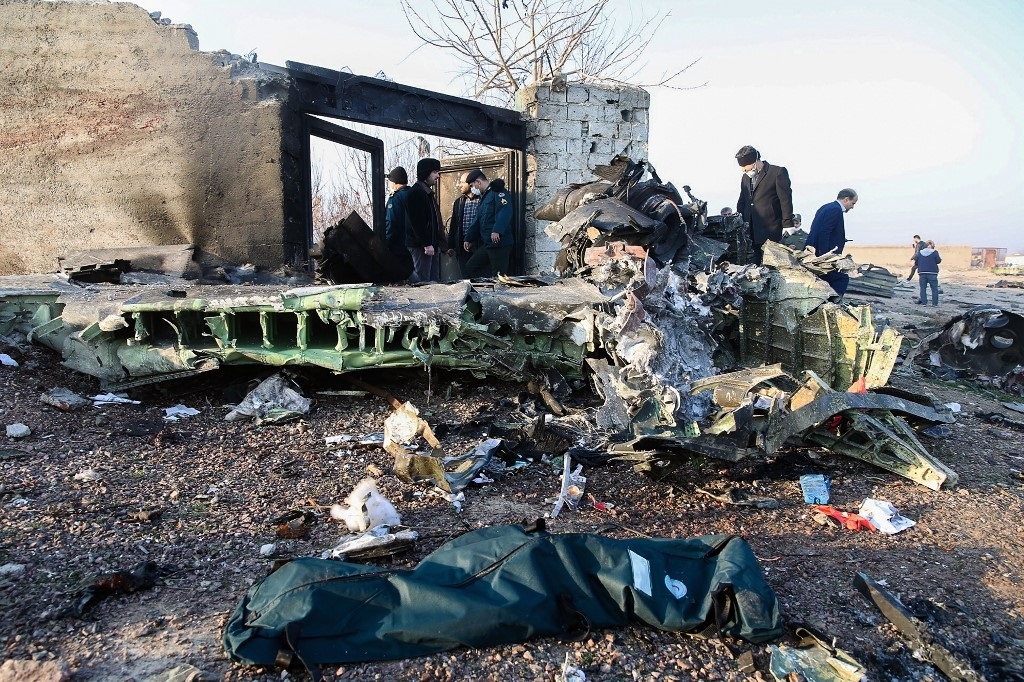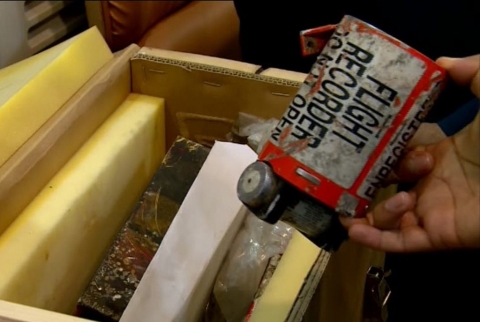Iran plane crash: What we know - and what we don't

It was delayed by about an hour, but by shortly after 6am on Wednesday, Ukrainian International Airlines flight PS752 took off from Imam Khomeini International Airport, bound for Kiev.
A newlywed couple, dozens of university students and entire families were among the 176 people on board, most planning only to stop over in the Ukrainian capital before heading on to Canada.
Six minutes later, the Boeing 737-800 - the most popular aircraft in the world which flies thousands of people everyday - fell through the dark morning sky on fire. None of the passengers survived.
What happened in the air?
Over the past 48 hours, that question has been subject to an international frenzy, drawing out amateur skywatchers and experienced open source investigators - and a cottage industry of aviation analysts in between - frantically chasing down leads.
New MEE newsletter: Jerusalem Dispatch
Sign up to get the latest insights and analysis on Israel-Palestine, alongside Turkey Unpacked and other MEE newsletters
Just hours before the crash, Iran fired more than a dozen ballistic missiles at two Iraqi military bases hosting American troops in retaliation for a US strike last week killing top Iranian military commander Qassem Soleimani.
Those circumstances, as well as unverified photos and reports, had raised suspicions that the plane was brought down by something other than technical difficulties.
The concerns reached a crescendo late on Thursday as US government officials - all speaking anonymously - told US media outlets that they believed the Iranian air defences had accidentally shot down the plane.
One official said that satellite data had shown heat signatures for two surface-to-air missiles two minutes after the plane was airborne, followed by an explosion in the vicinity of the plane.
Without official comment or verifiable data, however, investigators remained cautious about the reports. But hours later, they shared footage which they say appears to show a missile hitting a plane near the Imam Khomeini airport, moments before the crash.
The Iranians, however, have denied that the airline was hit by a missile, saying the scenario made "no sense" because there were so many flights in the country's airspace at the same altitude at the same time, and have described the reports as "psychological warfare".
What are the big questions still lingering?
If, as US officials and investigators suggest, something did indeed hit the aircraft, what was it, where did it come from, who fired it and why? And will US officials release the data from which they drew their conclusions?
One line of inquiry that open-source investigators have been looking into are two photos that emerged after the crash and appear to show part of a Tor M-1 missile.
But they have not been able to verify where the photos were taken and those who took the photos have not come forward, according to a Bellingcat analysis released late on Thursday.
And if the plane wasn't hit by a missile, as Iran contends, what brought it down? Aviation analysts have said that whatever happened, happened very fast, leaving the crew without time to even put out a may-day call. So what was it?
The flight's black boxes, containing critical cockpit and flight data records which were recovered in the crash debris, may be able to shed more light.
Iran has said it refuses to hand over the boxes to the US, which is one of a handful of countries with the capability for that kind of analysis, which is entirely within its rights.
On Friday, the head of Iran's Civil Aviation Organisation told reports that officials prefer to download information from the boxes in the country, but will seek help if they are unable to do that.
Ukraine has also sent investigators to Iran and has said they want to search the crash site, and it will be interesting to see what they encounter, particularly given unverified reports that bulldozers have been clearing the site.
How soon answers will come is unclear. Iran said extracting the information could take one to months, while the entire investigation might go on for a year or two.
Middle East Eye delivers independent and unrivalled coverage and analysis of the Middle East, North Africa and beyond. To learn more about republishing this content and the associated fees, please fill out this form. More about MEE can be found here.





